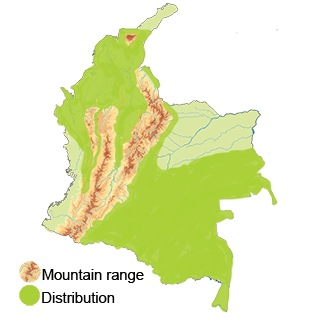Rufous-breasted Hermit
The Rufous-Breasted Hermit (Glaucis hirsutus) Read in Spanish
Appearance: The Rufous-Breasted Hermit is a medium-sized hummingbird species known for its distinctive appearance. It features a rufous-colored throat and breast, a contrasting dark face mask, and a generally olive-green body plumage. The Rufous-Breasted Hermit displays a relatively long, slightly curved bill, adapted for feeding on nectar from flowers.
Habitat: The Rufous-Breasted Hermit can be found in a variety of forested habitats, including tropical and subtropical moist forests, edges, and clearings. These habitats provide the necessary cover and food sources, such as nectar and insects, for the species to thrive.
Behavior: Rufous-Breasted Hermits are known for their solitary and secretive behavior, often seen foraging alone deep within the forest understory. They are agile fliers, capable of swift movements and sudden stops while feeding on nectar from flowers. These hummingbirds are territorial, defending their feeding territories aggressively against intruders.
Breeding: Breeding behavior in Rufous-Breasted Hermits typically involves males engaging in courtship displays to attract females. The female constructs a small, cup-shaped nest using plant fibers, moss, and spiderwebs, usually located in dense vegetation. Clutches typically consist of two white eggs, which the female incubates and cares for until the young hatch.
Conservation Status: The conservation status of the Rufous-breasted Hermit is currently categorized as "Least Concern" by the International Union for Conservation of Nature (IUCN).
Distribution
The Rufous-breasted Hermit (Glaucis hirsutus) is distributed across various regions in Colombia, primarily in areas that offer suitable habitat for these hummingbirds.
Chocó Region: The Chocó biogeographic region, located on the Pacific coast of Colombia, is one of the key areas where the Rufous-breasted Hermit is commonly observed. This region is known for its high levels of rainfall and diverse flora and fauna, making it an important habitat for many bird species, including hummingbirds.
Andean Region: The Rufous-breasted Hermit can also be found in various parts of the Andes mountain range in Colombia. These birds inhabit montane forests and cloud forests at different altitudes along the Andean slopes, where they feed on nectar from flowering plants and hunt for insects.
Sierra Nevada de Santa Marta: This mountain range in northern Colombia is another important region where the Rufous-breasted Hermit can be sighted. The diverse habitats of the Sierra Nevada de Santa Marta, ranging from tropical rainforests to páramo ecosystems, provide suitable conditions for a variety of bird species, including hummingbirds.
Other Regions: While the above regions are key areas for observing the Rufous-breasted Hermit in Colombia, these birds can also be found in other parts of the country where suitable habitats exist, such as in forested areas, reserves, and protected areas.
Taxonomy
The Rufous-breasted Hermit (Glaucis hirsutus)
- Kingdom: Animalia
- Phylum: Chordata
- Class: Aves (Birds)
- Order: Caprimulgiformes
- Family: Trochilidae
- Genus: Glaucis
- Species: Glaucis hirsutus
Vocalization
The Rufous-breasted Hermit (Glaucis hirsutus) is a hummingbird species known for its relatively quiet and subtle vocalizations compared to some other bird species. These hummingbirds produce soft, high-pitched, whistling calls that can be described as simple and melodious. The vocalizations of the Rufous-breasted Hermit are typically used for communication within their social groups and may serve purposes such as mate attraction, territory defense, and general interactions with other hummingbirds.
During courtship and breeding seasons, male Rufous-breasted Hermits may vocalize more frequently to attract females or establish their territories. The calls of the Rufous-breasted Hermit are often short, rapid, and easily overlooked in environments with competing sounds or in dense vegetation where these birds are commonly found.
Given the subtle nature of their vocalizations, capturing and studying the vocal repertoire of the Rufous-breasted Hermit can be challenging.







